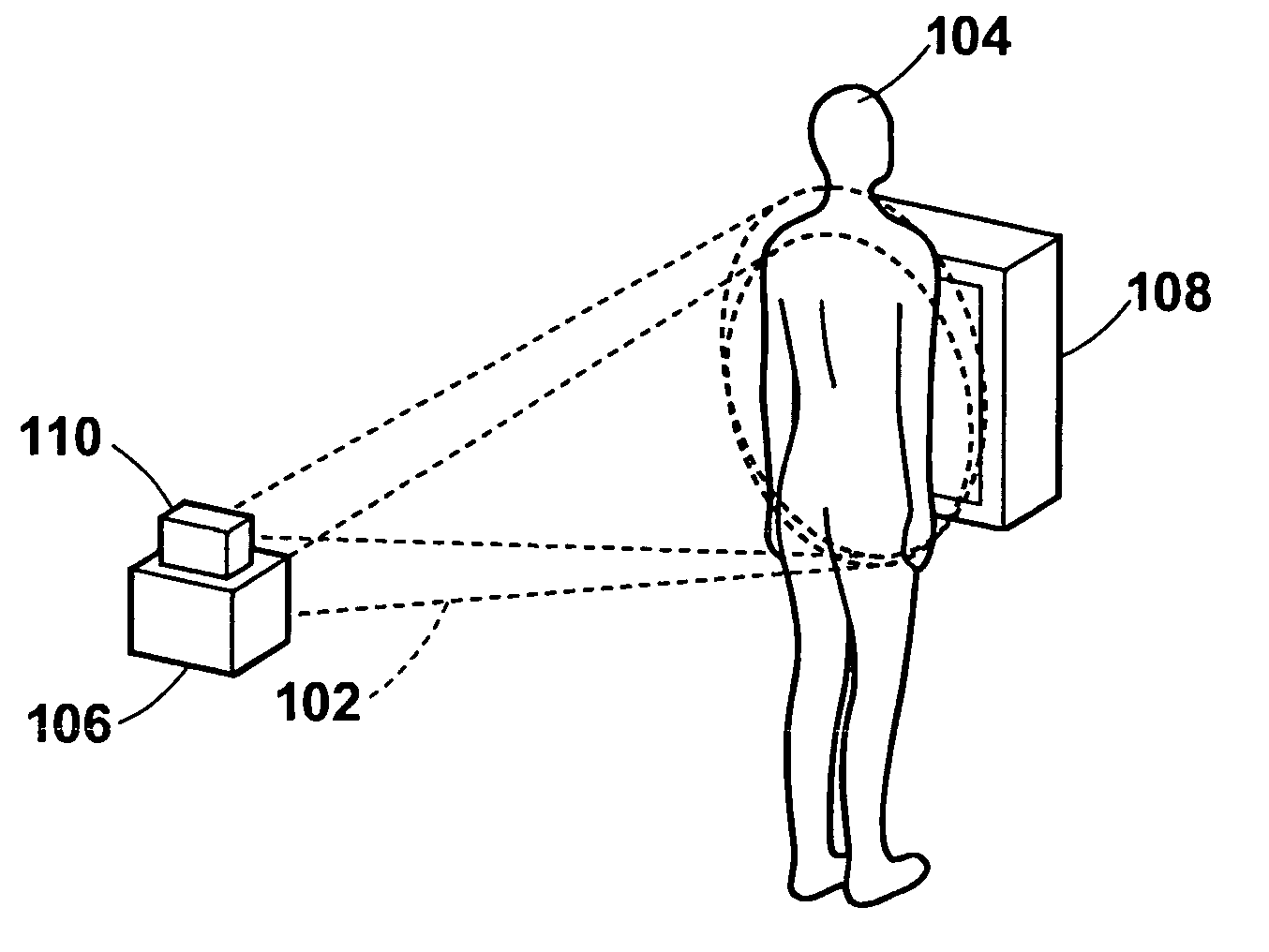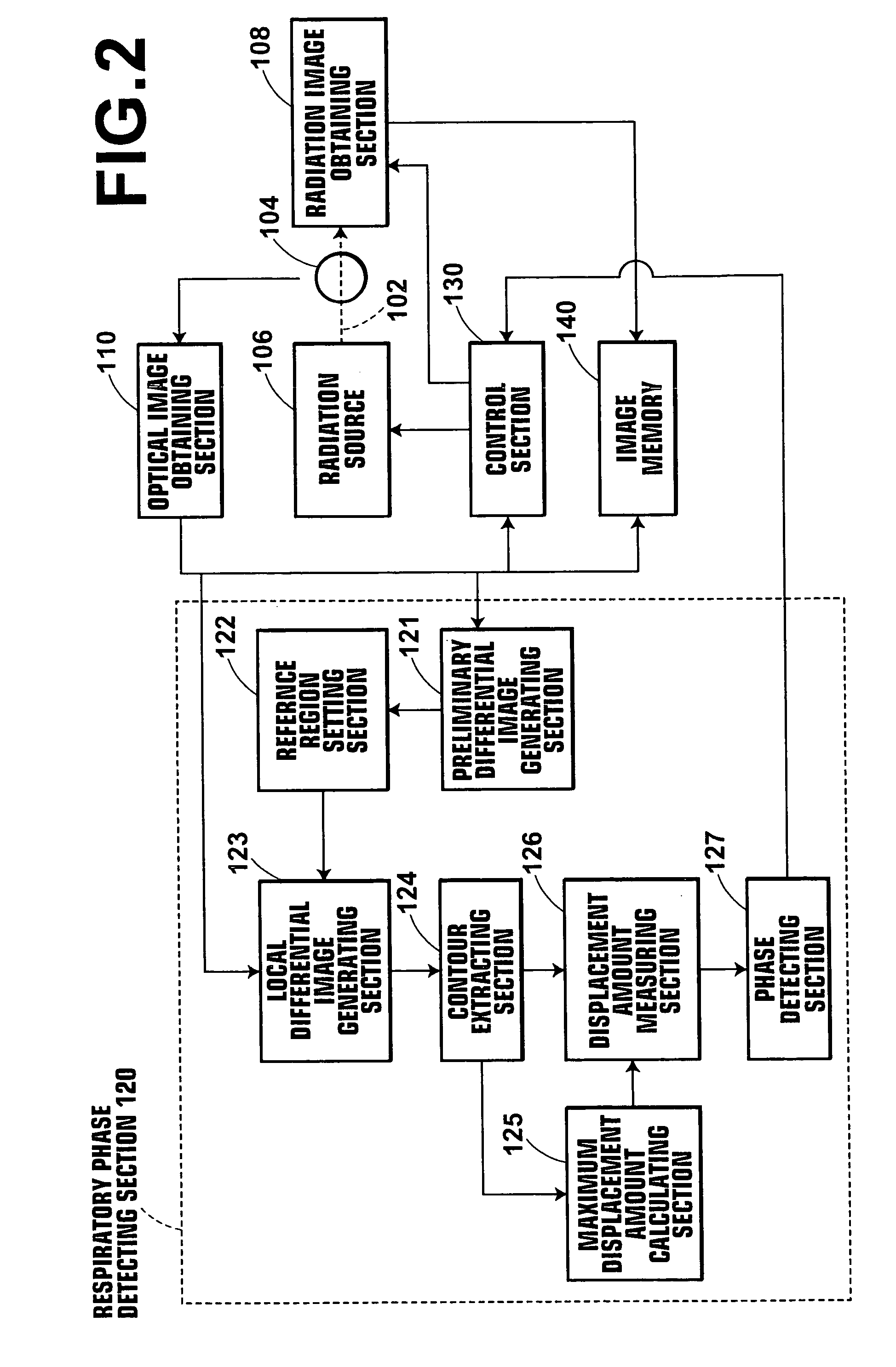Radiation emission control method, apparatus and program
a technology of radiation emission control and apparatus, applied in the field of radiation emission control methods, apparatus and programs, can solve the problems of detection errors, subject exposure to excessive radiation dosage, difficulty in holding breath at each respiratory phase of test subject, etc., and achieve the effect of minimizing radiation exposure to test subj
- Summary
- Abstract
- Description
- Claims
- Application Information
AI Technical Summary
Benefits of technology
Problems solved by technology
Method used
Image
Examples
Embodiment Construction
[0039] Hereinafter, embodiments of the present invention will be described in detail.
[0040]FIG. 1 is an external view of a radiographing system 100 illustrating one aspect of the external view thereof. FIG. 2 is a block diagram of the radiographing system 100 of the present invention illustrating one example of configuration thereof.
[0041] The radiographing system 100 comprises: a radiation source 106 for emitting radiation rays 102 to a test subject 104; a radiation image obtaining section 108 for obtaining radiation images P1 to Pm (m denotes an intended number of respiratory phases to be described later) of the test subject 104 by detecting radiation rays emitted from the radiation source and transmitted through the test subject 104; and an optical image obtaining section 110 for sequentially obtaining optical image Fi (i denotes an arbitrary frame number) of the test subject 104 having the contour that varies with respiration of the subject by imaging the subject continuously....
PUM
 Login to View More
Login to View More Abstract
Description
Claims
Application Information
 Login to View More
Login to View More - R&D
- Intellectual Property
- Life Sciences
- Materials
- Tech Scout
- Unparalleled Data Quality
- Higher Quality Content
- 60% Fewer Hallucinations
Browse by: Latest US Patents, China's latest patents, Technical Efficacy Thesaurus, Application Domain, Technology Topic, Popular Technical Reports.
© 2025 PatSnap. All rights reserved.Legal|Privacy policy|Modern Slavery Act Transparency Statement|Sitemap|About US| Contact US: help@patsnap.com



